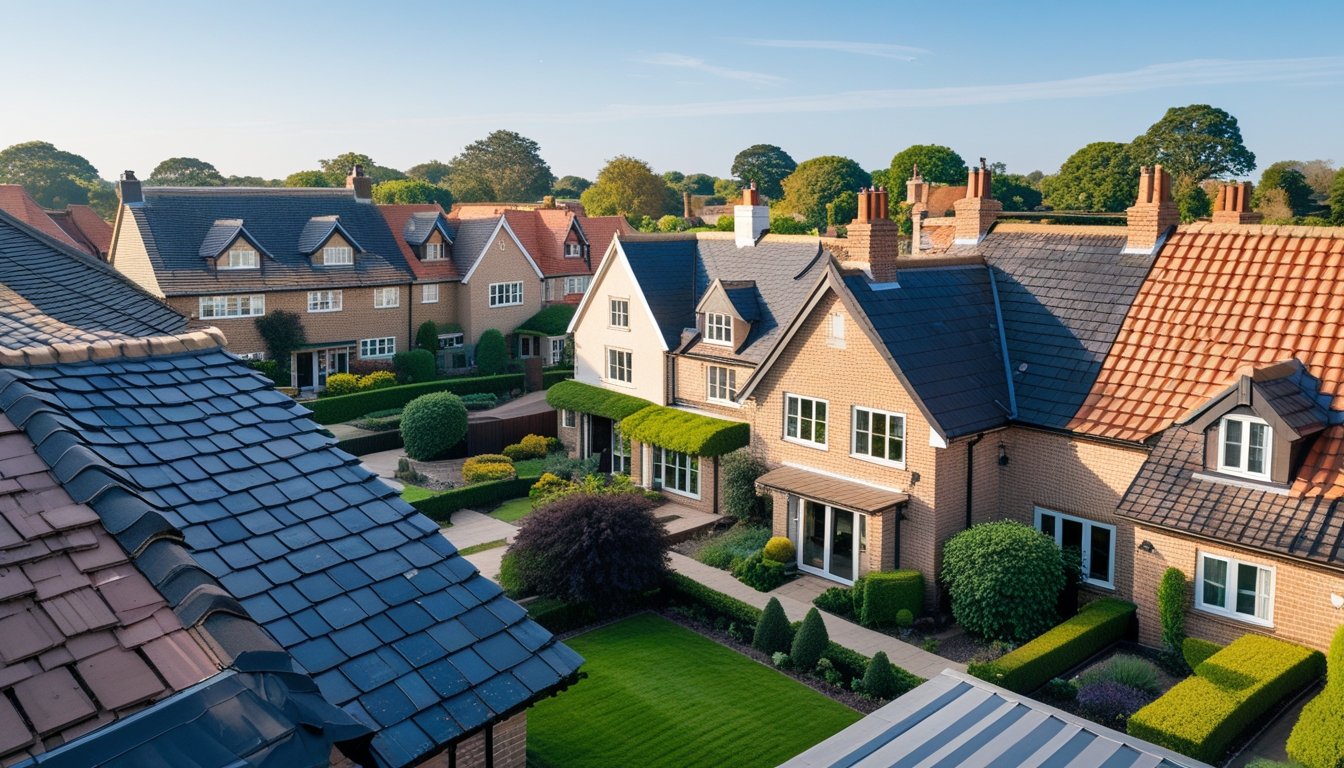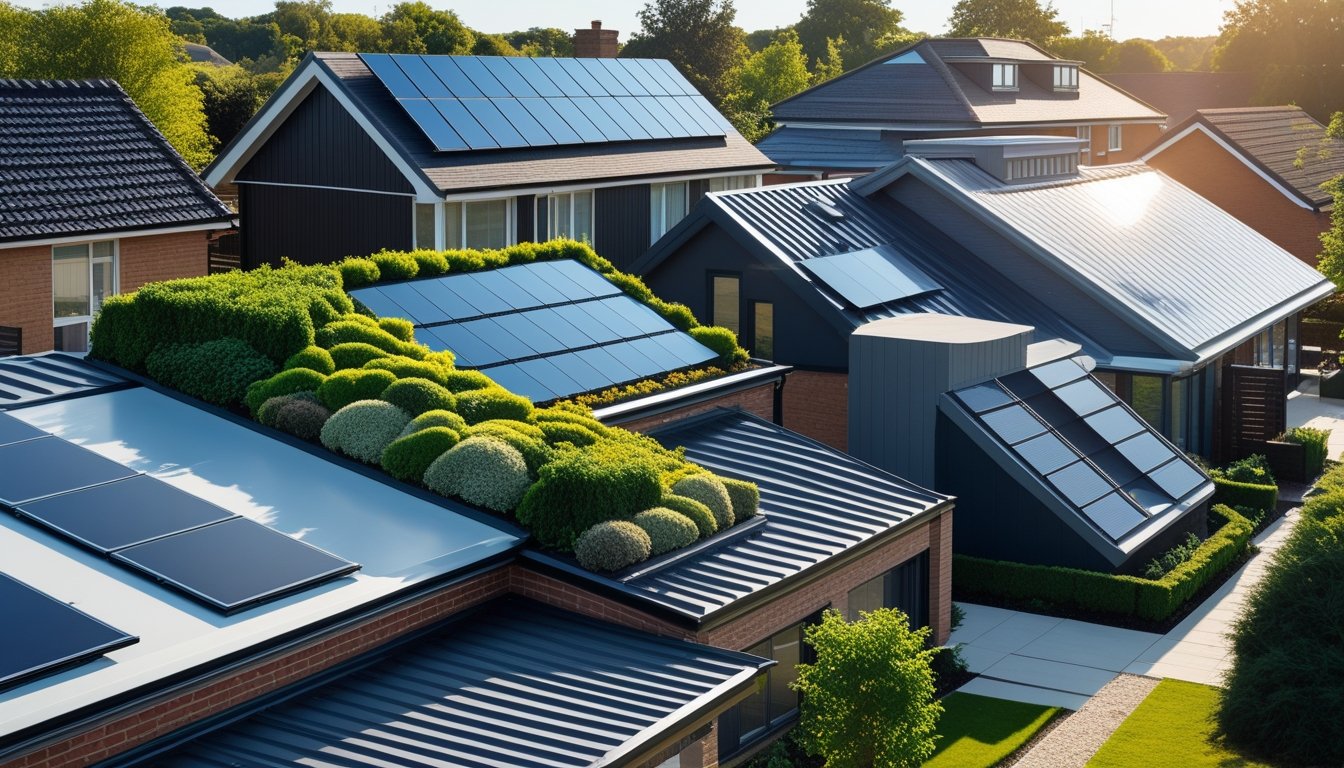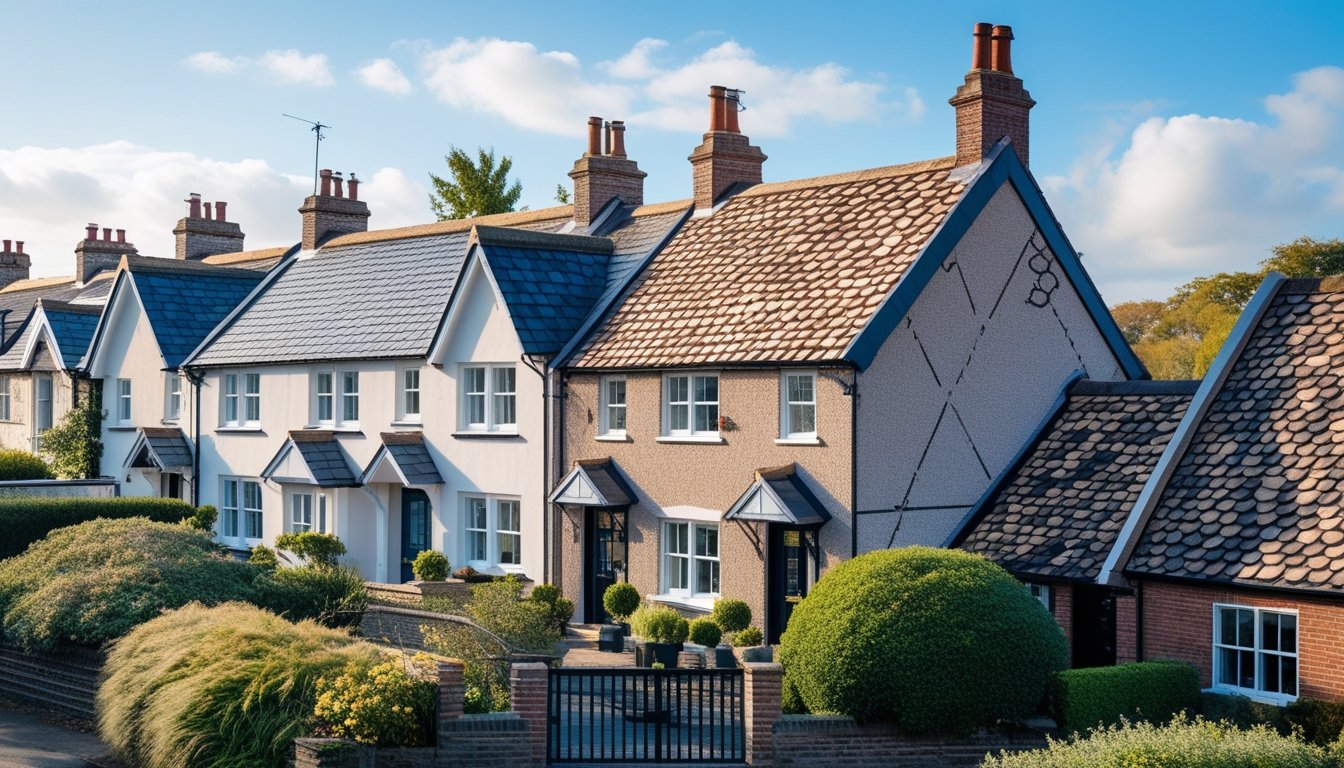Late updated: 14 Jul 2025 18:07
Written by: Oliver Bennett
Exploring Unique Roofing Patterns for UK Homes: Innovative Designs for Modern Living
When it comes to making our homes stand out, the roof can often be an overlooked aspect. The variety of distinct roofing patterns available for UK homes today is vast and exciting, breathing new life into traditional designs and capturing a modern flair. Unique roofing styles can not only enhance the visual appeal of a property but also significantly improve its durability against harsh weather conditions.

Our exploration into the world of roofing patterns reveals just how much innovation has influenced this aspect of home design. Modern materials and sustainable features are not only aesthetically pleasing but also environmentally friendly, helping homeowners contribute to eco-conscious living. From sleek minimalist designs to bold, unconventional structures, there's an option for every taste and requirement.
The choice of a unique roof goes beyond aesthetics. Beyond their visual appeal, these designs often incorporate state-of-the-art technology that reduces energy costs and boosts property values. Whether you're renovating an existing property or designing a new one, understanding and choosing the right roof can transform your home into a stunning architectural masterpiece.
Key Takeaways
- Unique roofing patterns enhance visual appeal and durability.
- Modern materials offer aesthetic and eco-friendly benefits.
- Technological advances in roofing can reduce energy costs.
Distinctive Roofing Patterns and Designs for UK Homes
Exploring unique roofing designs provides significant value to homes, blending aesthetics with functionality. From the classic appeal of gable and hip roofs to the modern look of flat and mansard styles, each pattern offers distinct features. Innovative non-traditional tile patterns also add a refreshing twist to roofing design.
Classic Gable and Hip Patterns
Gable roofs remain a perennial favourite in UK homes due to their straightforward design and effective water drainage capabilities. Their triangular shape not only enhances the visual appeal but also supports efficient rainwater runoff, making them ideal for the UK's variable climate.
Hip roofs, with their slopes on all four sides, provide a sturdier option, commonly preferred in areas prone to high winds. Their symmetrical design not only ensures stability but also adds a touch of elegance to the building. We often incorporate hipped designs in extensions, adding a seamless flow to the existing architecture.
Gable and hip combinations can further enhance aesthetic appeal, merging the traditional and modern elements seamlessly. These styles offer versatility and timeless elegance, ensuring they fit in both urban and rural settings.
Flat and Mansard Roof Styles
Flat roofs have gained popularity in recent years for their modern aesthetic and practical applications. Unlike traditional angled roofs, flat designs offer additional space for rooftop gardens or solar panel installations. This approach effectively combines style with sustainability, making them appealing to the environmentally conscious.
Mansard roofs, characterised by their double slopes on each side, provide additional living space within the attic, a feature particularly beneficial in areas with tighter building restrictions. By incorporating this style, we maximise both indoor space and natural light, offering homeowners flexibility in design and function.
Flat and mansard roofs both offer unique possibilities for utilising space. While flat roofs keep a low profile, mansard roofs deliver classical charm with their distinct shape.
Innovative Non-Traditional Tile Patterns
Innovative roofing materials and patterns bring a new dimension to UK home designs. Composite tiles mimicking natural materials, such as slate or clay, offer durability and a contemporary aesthetic, all while reducing weight and cost.
Interlocking tiles create dynamic designs, enabling us to customise patterns while optimising installation time. Implementing a variety of colours and textures can transform a simple roof into an eye-catching feature that enhances overall curb appeal.
This creative approach allows homeowners to express individuality, offering a unique blend of practicality and style through tailored roofing designs that stand out in any neighbourhood.
Modern Materials and Sustainable Features in Unique Roofs

Exploring the innovative world of roofing, we uncover a spectrum of materials and techniques that merge modern aesthetics with sustainable practices. From the sleek resilience of metal roofs to the lush appeal of green roofs, these elements define the future of architecture.
Metal Roofs for Contemporary Appeal
Metal roofs offer a sleek, contemporary look that appeals to the modern homeowner. Often crafted from aluminium, steel, or copper, these roofs are not just visually attractive; they are durable and highly resistant to harsh weather conditions.
Thanks to their longevity, they require less frequent replacement, contributing to sustainability. Moreover, metal roofs can be fully recycled at the end of their life cycle, reducing waste in landfills. With options like standing seam panels and metal shingles, homeowners have versatile aesthetic choices to enhance their architectural style.
Clay Tiles and Traditional Materials
Clay tiles evoke the charm of traditional design while offering modern benefits. Known for their durability and timeless appearance, clay tiles are now more adaptable with contemporary shapes and finishes. They suit a range of architectural styles from rustic cottages to Mediterranean villas.
Additionally, clay is a natural insulator, helping to maintain indoor temperatures, which supports energy efficiency. Unlike many synthetic materials, clay tiles are made from natural earth materials which makes them an eco-friendly option. Available in a variety of colours and textures, they add distinctive character to any home.
Eco-Friendly Solutions: Green Roofs and Rooftop Gardens
One of the most striking sustainable features is the green roof. These roofs are covered with vegetation, reducing heat absorption and promoting biodiversity. Green roofs provide a habitat for birds and insects while helping to manage rainwater runoff, effectively reducing urban flooding risks.
Rooftop gardens take this concept further, offering lush spaces for leisure and urban agriculture. Besides enhancing aesthetics, they improve air quality and contribute positively to the microclimate. Such solutions not only address environmental issues but also offer homeowners the joy of maintaining a garden oasis in the heart of urban sprawl.
Integrating Energy Efficiency and Solar Panels
With the drive towards renewables, integrating solar panels into roof designs is becoming paramount. Solar roofing systems, like photovoltaic tiles, blend seamlessly into traditional roofs, providing clean energy without compromising on appearance. When combined with other features like skylights, these systems harness maximum solar gain.
Beyond generating power, solar panels help reduce the home's carbon footprint significantly. Integrated solutions that combine solar and other smart technologies improve energy efficiency by monitoring and adjusting energy use in real time. We see a rise in homes that not only sustain themselves but contribute back to the grid, marking a pivotal shift in residential design.
Frequently Asked Questions

In this section, we explore various aspects of roofing choices in the UK, focusing on sustainability, blending traditional and modern styles, insulation, durability, legal regulations, and cost-effectiveness. Our goal is to provide insightful and practical information for better decision-making.
What are the most sustainable roofing materials used in contemporary British architecture?
Sustainable materials have become a priority in British architecture. Reclaimed slate and green roofs are particularly popular due to their environmental benefits and long-lasting nature. Composite asphalt often features recycled content, combining sustainability with durability.
How can one incorporate traditional British roofing styles into a modern home?
Integrating traditional styles like thatch or slate with modern architecture can be achieved through careful design. Using reclaimed materials or incorporating traditional patterns into a contemporary context can maintain historical charm while enhancing functionality.
What considerations are important for ensuring proper insulation in UK roofing designs?
Proper insulation is crucial for energy efficiency and comfort. Materials such as fibreglass or rigid foam are often used. Ensuring airtight installation and attention to proper ventilation can prevent heat loss and condensation issues.
In terms of durability, which roofing patterns are best suited to the UK's varied climate?
Pitched roofs are favoured for their ability to handle rain and snow, reducing water accumulation. Materials like slate or metal provide excellent resistance to weather extremes, ensuring longevity in the UK's diverse climate.
What are the current regulations regarding roof renovations and alterations in the UK?
UK regulations vary by region, but typically require permits for significant alterations. Compliance with building codes regarding safety and materials is mandatory, with specific attention to energy efficiency and environmental impacts.
Could you outline the cost-benefit analysis of different roofing materials for UK homeowners?
Costs vary significantly, with slate being one of the pricier options but offering longevity. Asphalt may be more economical but requires frequent replacement. A cost-benefit analysis often includes longevity, maintenance needs, and energy efficiency to provide a holistic understanding of material choices.
